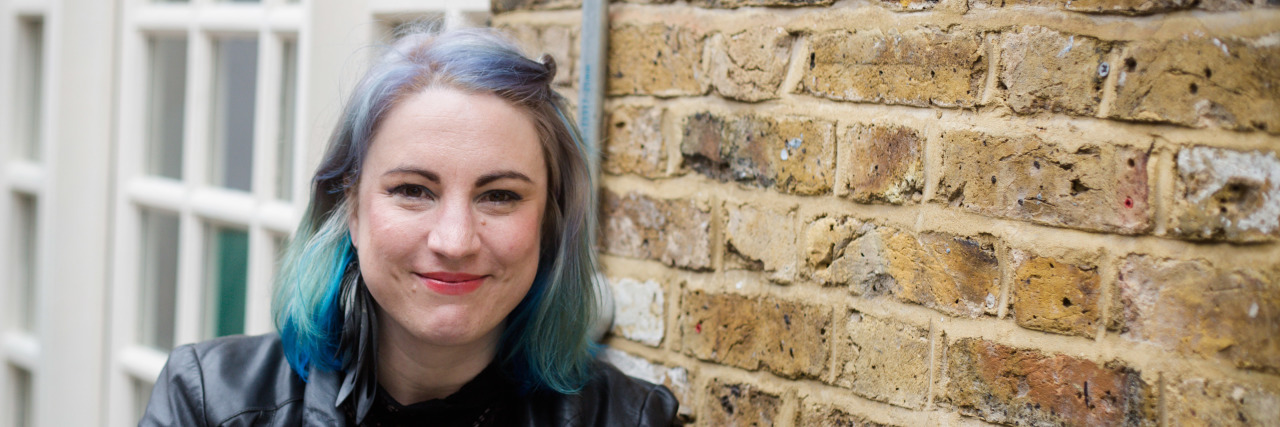In the 13 years I have been self-employed I have also been the manager and guardian of a body with chronic pain and illness.
Motherhood also popped onto the scene nine years ago, so alongside a young family and designing a life and career that works for me, there have been a lot of ups and downs, tried and tested techniques, methods, face plant moments, and a-has.
In my “normal,” pain-free state I am super productive and organized. I am Trello’d up, everything is mapped out in Google Calendar, and I use two 90 day year planners (currently the EVO system and the Best Me journal).
I work in Pomodoro chunks, I design my day to be doing certain tasks at the right times of day according to how my brain works, and I plow through my list with playlists designed to help my neural pathways fire at their best.
In short, I am on it. I am the archetypal good girl of getting things done.
During the time I am in pain, however, it is a very different beast entirely. Either my body, brain, or both might not be functioning well enough to complete the tasks I had scheduled.
I have to re-arrange my diary for the day, week or month, crank up the self-care protocol and surrender to what I need to do to help it pass with ease. (In reality, it has actually taken me about 15 years to get to the stage of acceptance and allowing it to pass, so that sentence is short but densely packed with experience).
What happens to my day is a disrupted pattern. Which is, by happenstance, the perfect storm for creative thinking. When our routines are interrupted and our habits are stopped in their tracks, we can allow new experiences in.
Of course, whilst this is likely to be on the macro level when dealing with pain, I often find myself watching programs, discovering videos, listening to podcasts, radio shows or reading articles that weren’t scheduled into my perfectly planned-out day. The result is often the influx of new ideas for content, services, approaches and connections.
The disruption allows creative, divergent thinking to happen naturally.
Another side effect of forced downtime is that projects and ideas that are percolating in my brain have more time to gestate. If I am unable to Get Something Done, it remains an un-closed task in my mind, which means I often have a different solution or more creative way to solve it.
Adam Grant references this in his wonderful book “Originals,” and explores the notion that procrastination opens the doors to originality. “Procrastination gives you time to consider divergent ideas, to think in nonlinear ways, to make unexpected leaps,” he explains. Although I am not someone who is naturally programmed to leave things until the last minute, embracing the need to leave it until later has often resulted in better ideas, clearer insights and a creative approach.
I have experienced time and time again that trying to fit the mold of “normal” productivity just doesn’t work for me.
I embrace the tech, tips and approaches that work for me, I batch produce where possible, and I have developed workarounds and strategies. But I have also learned that being flexible, adaptive and honest with how to work best in any given moment has served me well, although it’s a continual work in progress.
I no longer book up my days with client calls, and instead prefer to work one to many in group dynamics and online-facilitated programs. I am clear about what is likely to make me feel like I have achieved versus what is likely to make me feel like a failure, and take note of each and every “win” to celebrate.
We all work in different ways, and perhaps our brilliance requires certain criteria that varies from day to day or moment to moment. Knowing how you work best and when is such a powerful tool.
Perhaps you need to work in a coffee shop to write copy, or brainstorm in a totally new location to find new ideas and stimulus. Maybe you thrive when head-down and focusing two days a week but need the other three around other humans in a co-working space to feel socialized and inspired.
However you choose to design your productivity and schedule, allowing disruption and creativity is incredibly powerful. Whether you enforce a day away from your usual routine or embrace your natural flow and re-arrange your day to work better for you, creativity loves change.
What’s more, it thrives when we allow it to overtake the Great Productivity Dream.
Of course, straying from the to-do list can feel impossible, distressing and unheard of in our achievement-based culture. But as I have learned, it’s in those unplanned moments that the magic truly happens.
This story originally appeared on Jo Gifford’s website.

